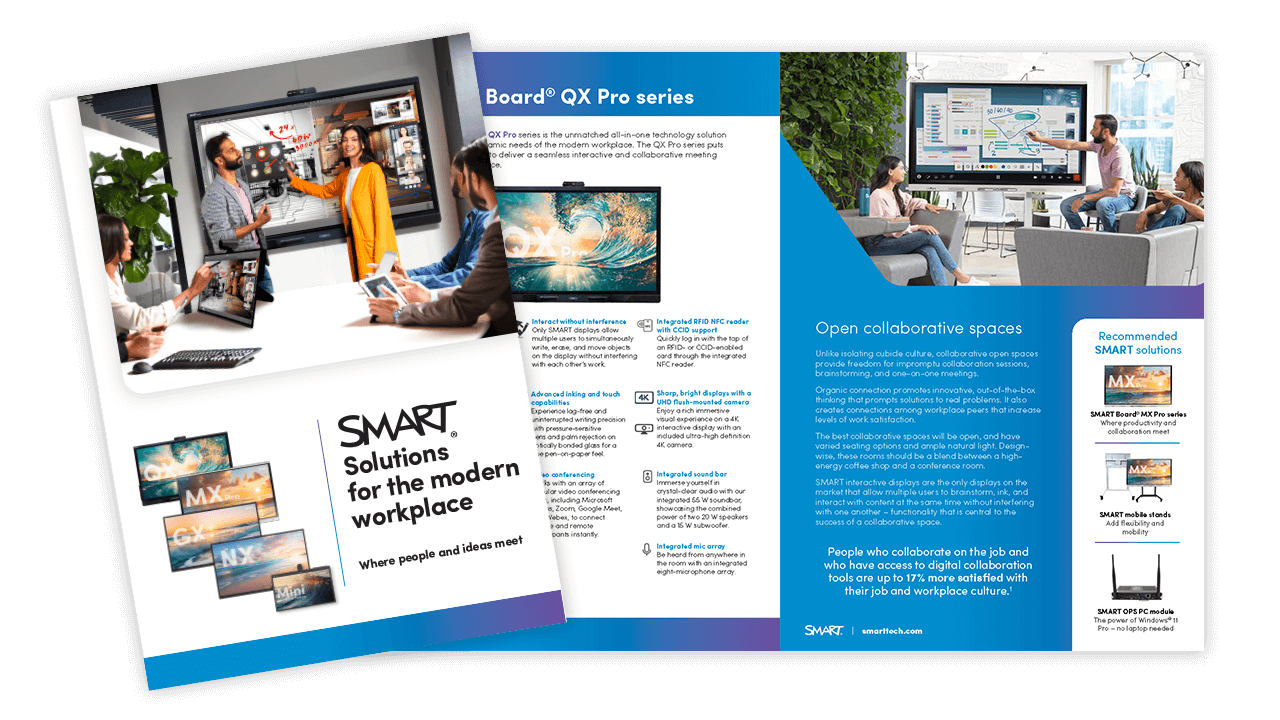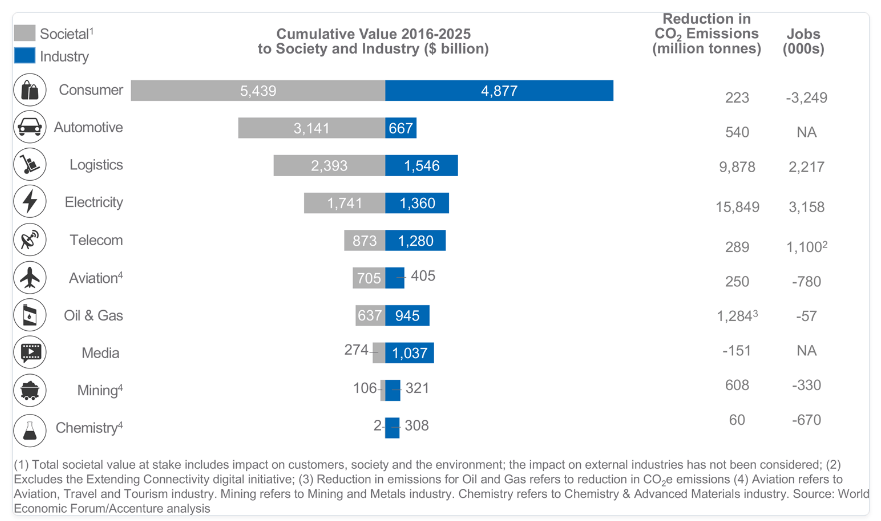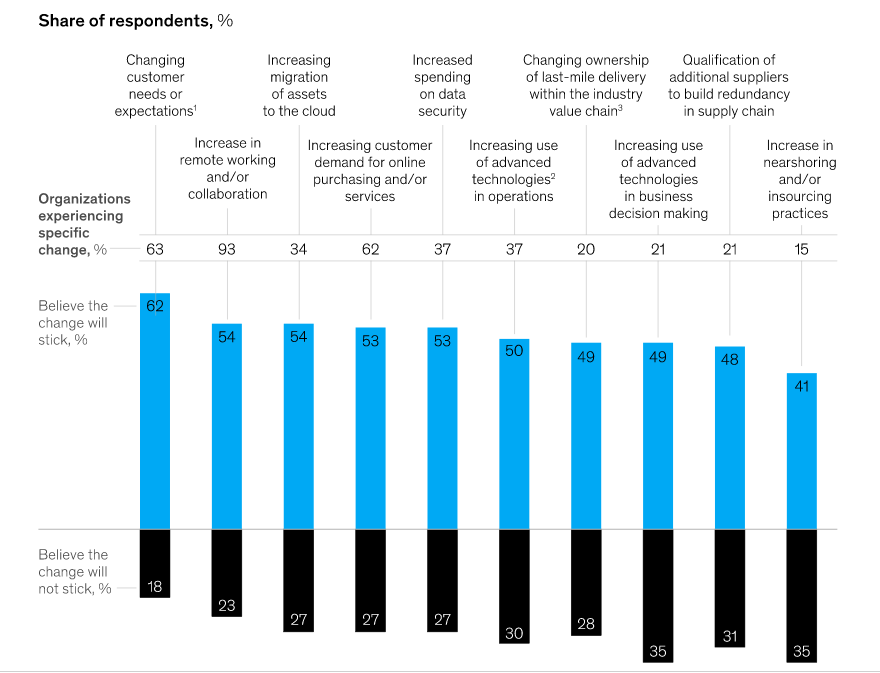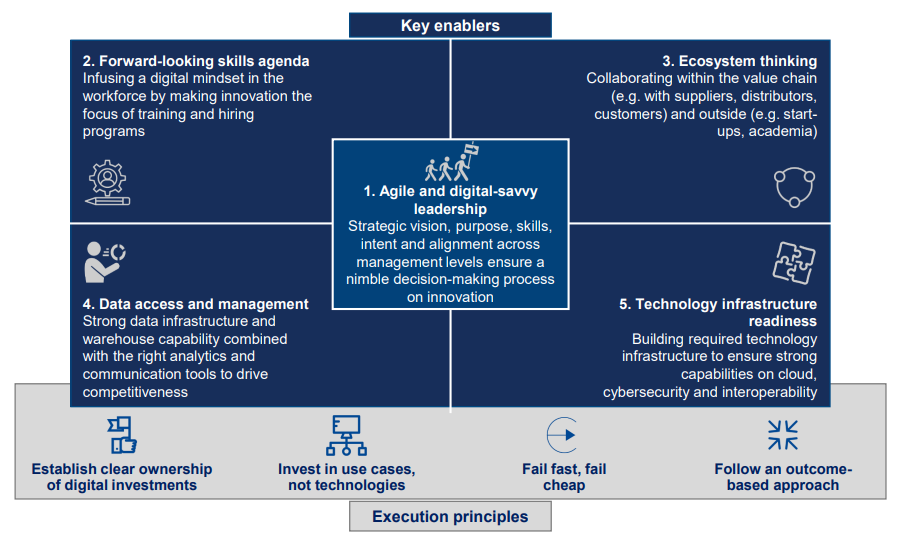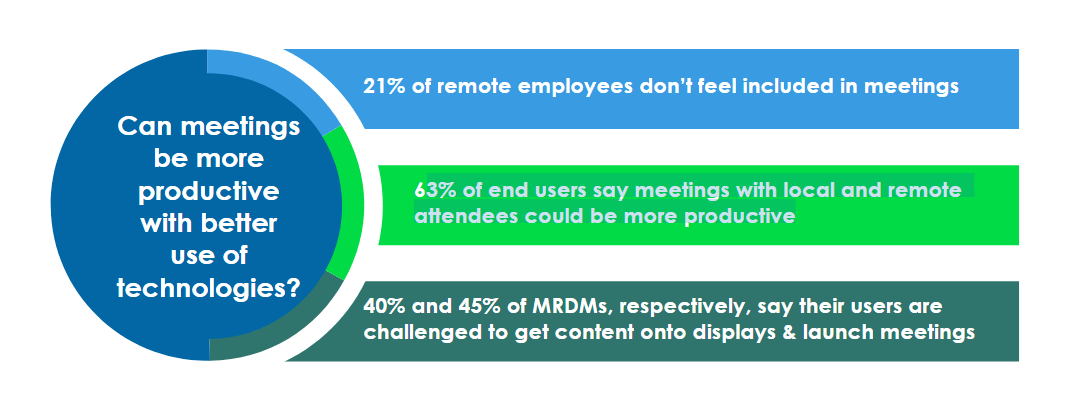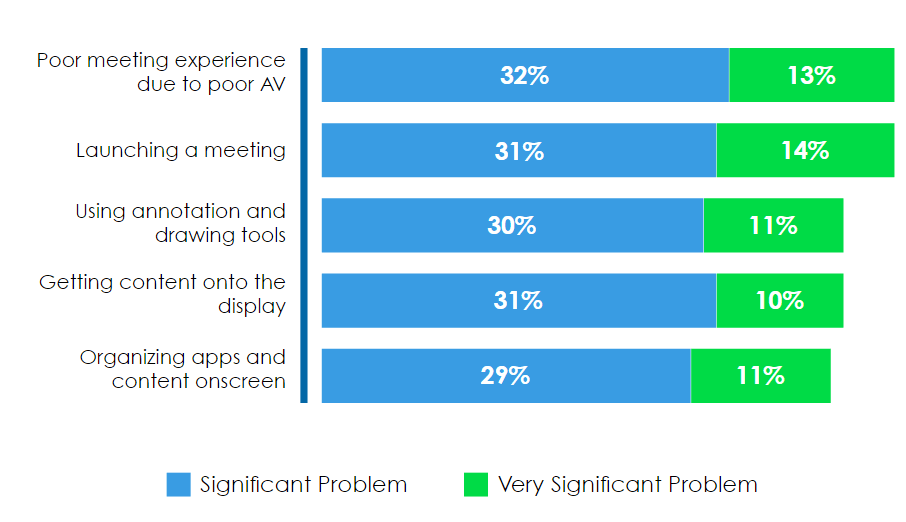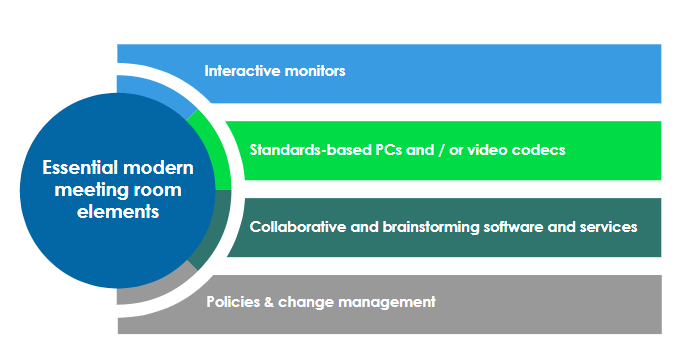The impact of digital transformation
In 2015, the World Economic Forum created the Digital Transformation Initiative (DTI) to examine the impact of digital technologies on businesses and society. The DTI estimates that the net benefits will be greater than $100 trillion between 2016 and 2025.
Digitizing fast in post-pandemic world
Has your organization already told you “business as usual “ may look a little different going forward? It’s likely your organization is embracing emerging technologies as part of a digital transformation process.
A 2020 Future of Jobs Report found 84% percent of employers are set to digitize working processes fast, in the wake of the pandemic. They also plan to expand remote work, enabling up to 44% of their workforce to work out-of-office. The report also notes that one third of all employers plan to use digital tools to create a sense of community, connection and belonging
The International Data Corporation (IDC) estimates corporate spending on new technologies will grow by 2x GDP in the coming years.
Rethinking collaboration
Through research discussions with industry leaders, the DTI identified five key enablers for maximizing returns on digital investments.
- Agile and digital-savvy leadership
- Forward-looking skills agenda
- Ecosystem thinking
- Data access and management
- Technology infrastructure readiness
Investing in better meeting spaces
In a recent talk hosted by SMART, WIRED Magazine executive editor Jeremy White said leaders need to change the office space to increase creativity and collaboration. According to White, “We will need practices to incorporate small talk if corporations want to encourage collaboration...and ways to recreate casual collisions.” This applies to the physical office space as well as the virtual one.
So, how do you foster small talk and casual collisions for a dispersed team?
Investments in AV are likely to provide the most value as organizations reopen. Not only will this tech promote in-office social interactions, it will also help remote employees collaborate more comfortably with peers.
At a recent panel discussion, How Technology Can Help Unlock Value in Post-COVID Work Environment, AV experts discussed the challenges organizations now face. They agreed that tools that support collaboration are critical. These tools should:
- Allow participants to easily bring up a document and mark it up,
- quickly and easily share content from any device,
- increase social interaction when employees are together, and
- allow remote participants to feel like they’re in the room.
In 2020, Wainhouse Research studied how tools for engagement and collaboration could improve employee experience. They interviewed and surveyed decision makers in IT, AV and faculties to find out how they use meeting room technologies.
Their findings identified challenges with conventional AV setups – especially when collaborating remotely. The disruption of COVID-19 has magnified these challenges. Companies are scrambling to provide business continuity for in-office and remote employees.
Collaborative corporate training
Organizations are also rethinking how they deliver corporate training programs. According to a study by Degreed, 55% of workers turn to their peers first when they need to upskill or reskill – a close second to asking a boss or mentor. So, how do you create learning programs that connect people with their peers and encourage collaboration?
A LinkedIn 2021 Workplace Learning Report suggests participant engagement rises when people can learn together with their peers. It also found that corporate learning and development professionals across the world believe in the power of community. Of these professionals:
- 86% said learning is more engaging when people learn together,
- 91% said employees who learn together are more successful,
- and 92% said learning together helps to create a sense of belonging.
Find out more about the impact of technology-enhanced corporate training(*)
Digital transformation at home
It’s not just businesses that are transforming. A recent policy report from the Organization for Economic Co-operation and Development (OECD) says governments play a role in how people with home offices stay productive in a post-COVID era. Government policy can help people gain self-management and tech skills, invest in home offices and access fast and reliable broadband.
